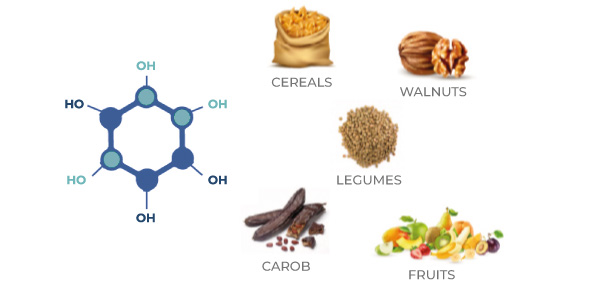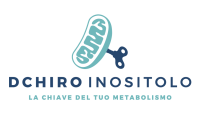WHAT IS D-Chiro-Inositol?
D-chiro-inositol, also known as DCI, is part of the inositols family, a group of nine stereoisomers, or compounds that, despite having the same molecular formula, have different physical properties and chemical behavior. Inositols are six-carbon polyols widely found in nature, among which the most studied are myo-inositol (MYO) and d-chiro-inositol (DCI). The latter is the most functional.
WHERE IS D-Chiro-Inositol CONTAINED?
DCI, as well as myo-inositol, occurs in nature in a range of foods, including fruit and cereal, but it can also be synthetized by our body from a glucose molecule.
DCI and MYO also occur in various body tissues, in free or conjugated form, in the form of inositol phosphoglycan, and in this case they are part of the cell membrane and contribute to its integrity. Besides, they are the core of the structure of the second messengers, involved in different paths of intracellular signaling, like that related to insulin.
WHERE IS D-CHIRO-INSOITOL
EXTRACTED FROM?
The inositols occur in nature mainly in cereal, nuts, pulses and fruit. D-Chiro-inositol, which is among the inositols the one with the most relevant biological activity, is contained in buckwheat and, in a moderate quantity also in carob, which has turned into its main source of extraction.

HOW DOES D-Chiro-Inositol ACT?
When insulin binds to its receptor, mediators are generated by the hydrolysis of glycosylphosphatidylinositols located at the level of the cell membrane. Thus, such mediators can act in the intracellular metabolic process.
WHY IS DCI IMPORTANT AND WHAT HAPPENS IN CASE OF ITS LACK?
Our body generally produces a high quantity of Myo-inositol, that is converted by the epimerase enzyme into d-chiro-inositol.
This latter represents the biologically active version of Myo-inositol. Lots of researches prove that a deficit in the production of DCI might be at the root of the pathogenic mechanism of insulin- resistance:
a poor response of the organism to insulin
If insulin-resistance occurs there is, indeed, a poor transformation of MYO into DCI due either to a deficit of the epimerase enzyme, or to an increased catabolism of DCI before renal filtration. This in turn results in low levels of DCI but same or higher level of MYO, its precursor.
INSULIN
RESISTANCE

DEFICIT OF
EPIMERASE

POOR TRANSFORMATION OF MYO INTO DCI
INSULIN
RESISTANCE

DEFICIT OF
EPIMERASE

POOR TRANSFORMATION OF MYO INTO DCI
The resulting insulin-resistance in turn is related to a range of dysfunctions, such as:
In people suffering from such dysfunctions, the oral glucose tolerance test highlights low intracellular and blood levels of DCI.
THE BENEFITS OF
D-CHIRO-INOSITOL
In the aforementioned dysfunctions, the use of DCI has improved metabolism and the endocrine system, also being beneficial on
- Insulin sensitivity
- Hyperandrogenism
- Menstrual and ovarian irregularity
- Associated infertility
- Hirsutism and acne


